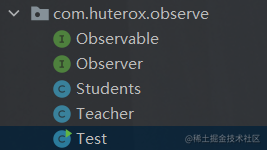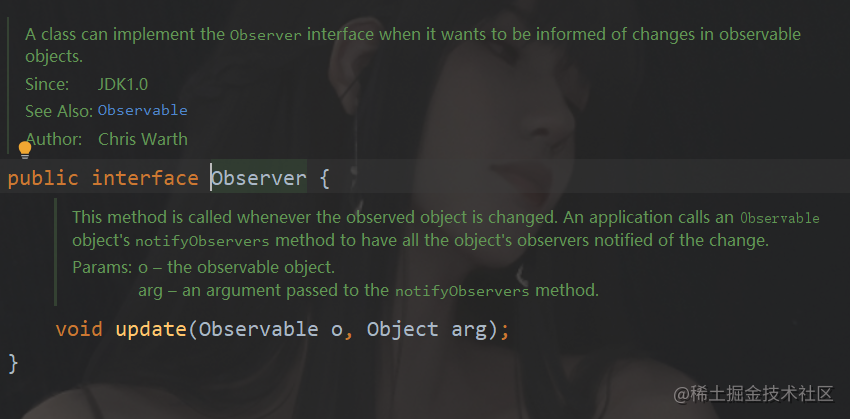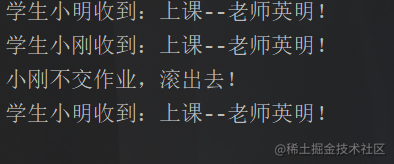theme: channing-cyan
highlight: androidstudio
"This is the 18th day of my participation in 2022's first update challenge. For details: 2022 first revision challenge」
preface
Nothing. Today, relax a little. I accidentally brushed a small video about the implementation of Spring observer mode when I visited Zhihu. I feel it's a little interesting. Let's explain what observer mode is.
Instead of explaining what this mode is, let's talk about what functions we want to achieve. I want such a function. A can provide services for B and C at the same time, but if B or C does not meet a certain condition, I will not provide services for it. For example, WeChat official account can provide services for multiple users simultaneously, but if B is not concerned, the user B can not enjoy services. Or like a teacher giving a class to a student, a teacher can give a class to multiple students together, but if the students are "invited" out by the teacher, they can't have a class together. There are two states here. For a student, if he listens well, he can continue his class. If he doesn't listen well, he can't.
We call the design pattern that can realize such a function observer pattern.
Project structure
It's easy to implement this pattern.

realization
We have defined two interfaces. Of course, this design pattern is actually a little like the proxy pattern, which controls the other party through the other party.
The two interfaces are simple.
package com.huterox.observe;
//import java.util.Observer;
public interface Observable {
void registerObserver(Observer o);
void removeObserver(Observer o);
void notifyObserver();
}
package com.huterox.observe;
public interface Observer {
void update(String message);
}
However, it is worth mentioning that our java actually implements an Observer interface.

Next is our student class
package com.huterox.observe;
public class Students implements Observer{
private String name;
private String message;
public Students(){
}
public Students(String name) {
this.name = name;
}
@Override
public void update(String message) {
this.message = message;
this.quite();
}
public void quite(){
System.out.println("student"+this.name+"received:"+this.message+"--Wise teacher!");
}
}
Teacher class
package com.huterox.observe;
import java.util.ArrayList;
import java.util.List;
public class Teacher implements Observable{
private String message;
private String name;
private List<Object> studentpool = new ArrayList<>();
@Override
public void registerObserver(Observer o) {
studentpool.add(o);
}
@Override
public void removeObserver(Observer o) {
studentpool.remove(o);
}
@Override
public void notifyObserver() {
for(int i = 0; i < studentpool.size(); i++) {
Observer observer = (Observer) studentpool.get(i);
observer.update(message);
}
}
public void setMessage(String message){
this.message = message;
this.notifyObserver();
}
}
Finally, the test class
package com.huterox.observe;
public class Test {
public static void main(String[] args) {
Teacher teacher = new Teacher();
Students xiaoming = new Students("Xiao Ming");
Students xiaogang = new Students("Xiao Gang");
teacher.registerObserver(xiaoming);
teacher.registerObserver(xiaogang);
teacher.setMessage("attend class;class begins");
System.out.println("Xiao Gang doesn't hand in his homework. Get out!");
teacher.removeObserver(xiaogang);
teacher.setMessage("attend class;class begins");
}
}
effect
Finally, let's take a look at the effect demonstration
